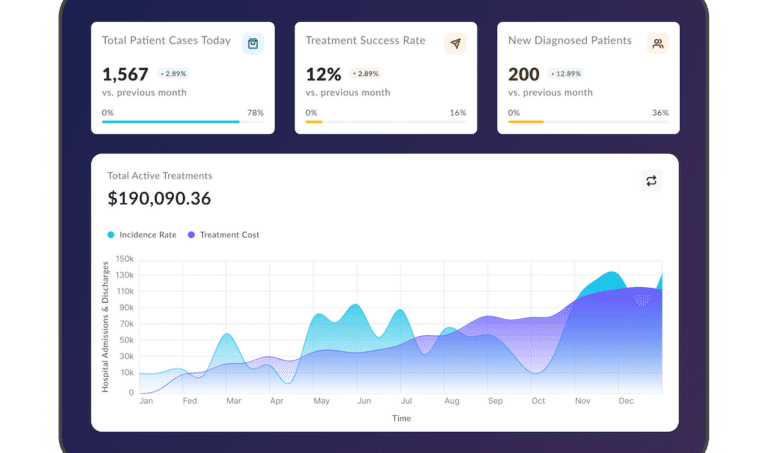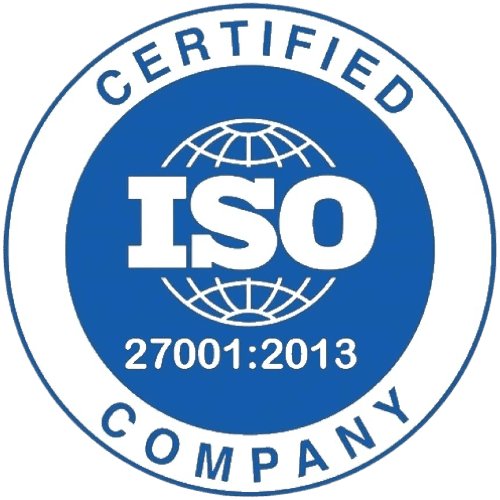Maximizing Safety and Efficiency: IoT in Automotive Industry
Did you know that by 2025, it’s estimated that there will be over 400 million connected cars on the road? That’s more than the population of the United States! The automotive industry is experiencing a shift, and at the center of this change is Internet of Things (IoT) development. Imagine a world where your car can foresee traffic jams, suggest different routes, or even manage its own upkeep before any issues arise. This isn’t far off—it’s the future the automotive sector is rapidly approaching. If you’re an engineer, a business owner, or simply interested in innovation, awareness of the impact of IoT in automotive industry is crucial for staying ahead.
Ready to see how it’s all unfolding? Read on.

We provide companies with senior tech talent and product development expertise to build world-class software. Let's talk about how we can help you.
Contact usTable of Contents
What is IoT in Automotive Industry?
Automotive Industry 4.0 centers on the digital overhaul of car manufacturing, incorporating state-of-the-art technologies. This includes the integration of artificial intelligence, robotics, IoT, additive manufacturing (like 3D printing), big data, cloud computing, and augmented/virtual reality (AR/VR).
So, what is IoT in automotive industry, exactly? At its core, the Internet of Things (IoT) refers to the network of physical objects—like your smartphone, your home thermostat, or, in this case, your car—that are equipped with sensors, GPS trackers, software, and various technologies. They communicate with other connected devices and systems via the Internet, enabling them to share data and function cohesively. In the automotive world, IoT turns ordinary vehicles into smart, connected machines (literally).

How IoT Integrates with Automotive Technology
IoT integration in automotive technology means your car is no longer just a means of transportation; it’s a data-driven machine that can interact with its surroundings. From real-time traffic updates to predictive maintenance alerts, IoT allows vehicles to collect and share sensory data, communicate with other cars, and even interact with smart infrastructure like traffic lights and smart parking systems. This interconnectedness with smart transport systems improves safety, efficiency, and the overall driving experience while reducing traffic congestion and emissions.
Key Components and Technologies Involved
Did you know that today’s cars have more lines of code than commercial airplanes? This complexity isn’t just under the hood—it’s in how vehicles connect with the world around them. There’s quite a bit of sophisticated technology involved in this.
- Sensors: These collect data on everything from speed and acceleration to engine performance and environmental conditions, feeding data into the vehicle’s onboard systems as well as external platforms.
- IoT Connectivity: Technologies such as Wi-Fi, Bluetooth, cellular networks (including 5G), and dedicated short-range communications (DSRC) ensure that data flows seamlessly from the vehicle to the cloud and back.
- Data Processing: In the automotive IoT environment, sophisticated algorithms and machine learning models are used to analyze vast amounts of data collected by sensors.
- Cloud Computing: Cloud stores and processes vast amounts of vehicle data, allowing for remote access and analysis.
- Cybersecurity Tools: Cybersecurity tools are deployed to protect data at multiple levels, from sensors and connectivity modules to the cloud storage systems.
However, while hardware like sensors and connectivity solutions play a crucial role, the real magic happens through software development. It’s the software that interprets the data collected by IoT devices, makes split-second decisions, and ensures advanced vehicle management capabilities. Without robust, well-designed software, even the most sophisticated hardware would fall short of delivering the seamless, intelligent performance we expect from modern vehicles.
Related – What is IoT: A Connected World Explained
Benefits of IoT in Automotive Industry
Ever think about how technology could make driving almost accident-free by 2030? IoT is working toward that goal. But this is not all – let’s look at other benefits of IoT in automotive industry and IoT applications.
| Benefit | Description | Use Cases |
| Real-time Monitoring and Alerts | IoT applications in the automotive industry enable real-time monitoring of vehicle performance, enhancing safety and efficiency. | Fleet management: Monitor vehicle health in real-time to avoid costly downtime. Emergency response vehicles: Ensure critical vehicles remain operational. Rental car fleets: Address issues quickly before they impact customer satisfaction. |
| Advanced Driver-Assistance Systems (ADAS) | IoT technology enhances ADAS features like lane-keeping, collision warnings, and adaptive cruise control for safer driving. | Safety systems: Offer lane-keeping assistance and collision avoidance features in today’s vehicles. Luxury vehicles: Offer enhanced safety features to attract premium customers. Public transport: Ensure safer rides with automatic braking and collision warnings. |
| Predictive Maintenance and Remote Diagnostics | IoT processes data from vehicle components to anticipate maintenance needs, helping to minimize unexpected breakdowns. | Maintenance scheduling: Predict part failures to lower repair costs. Commercial fleets: Schedule maintenance during off-peak hours to minimize downtime. Leasing companies: Extend vehicle life to maximize return on investment. |
| Fuel Efficiency Optimization | IoT in automotive industry monitors driving habits and engine performance, suggesting ways to optimize fuel usage and reduce impact. | Eco-driving apps: Suggest fuel-saving practices for drivers. Long-haul trucking: Cut fuel costs on extended trips. Ride-sharing services: Reduce operational costs through efficient driving. |
| Vehicle Health Monitoring | IoT applications in the automotive industry enhance vehicle safety by enabling real-time monitoring of critical systems, reducing the risk of accidents. Constant data collection evaluates the engine, brakes, and other essential components to ensure they operate properly. | Telematics systems: Continuously monitor to ensure vehicles perform at their best. Insurance companies: Provide discounts for vehicles that are well-maintained. Automated reporting: Streamline inspection processes with real-time health data. |
| Route Optimization and Traffic Management | The integration of IoT applications in the automotive industry enhances connected car technologies, and provides drivers with up-to-date traffic and route information. | Navigation systems: Offer the best route options based on real-time traffic data. Logistics companies: Optimize delivery routes for time and fuel efficiency. Public transport: Reduce delays by avoiding congested areas. |
| In-car Entertainment and Connectivity | IoT devices in automotive industry enable seamless entertainment and connectivity, allowing passengers to stream content and stay connected on the go. | Smart dashboards: Provide entertainment options and connectivity. Over-the-air software updates: Keep software and maps current. Voice assistants and augmented reality: Enhance user experience with the latest tech. Tourist vehicles: Offer augmented reality guides for scenic routes. |
| Personalized Driving Experience | IoT in automotive industry adapts vehicle settings like seat position, mirror alignment, and climate control to the driver’s preferences. | Driver profiles: Customize settings for individual drivers. Shared vehicles: Automatically adjust settings for each user. Luxury vehicles: Provide a premium, personalized driving experience. |
| Remote Vehicle Control and Monitoring | IoT in automobile sector enables remote control of vehicle functions like starting the engine, locking doors, and tracking location. | Mobile apps: Remotely start the car or lock/unlock doors via smartphone. Car-sharing services: Manage vehicle access remotely. Parental controls: Monitor and control teen driving behaviors remotely. |
Key Applications of IoT in Automotive Industry
The IoT in automotive industry market is expected to reach $622 billion by 2030, according to Precedence Research, and it’s clear IoT is key to the brighter future. Thanks to IoT, the automotive industry is becoming proactive rather than reactive, saving drivers time, money, and hassle.

Advanced Driver Assistance Systems (ADAS)
These systems were developed to enhance a driver’s control over the vehicle, thereby boosting both safety and comfort. ADAS systems monitor the vehicle’s surroundings by utilizing a blend of sensors, cameras, radar, and other components to provide alerts or autonomously intervene.
IoT boosts ADAS by linking vehicles to the Internet and other devices. Thanks to this connectivity, ADAS systems can access real-time data, which keeps them informed about the latest traffic conditions, road hazards, and other relevant factors. It also enables over-the-air updates, so the ADAS software is always equipped with the newest features and improvements.
Examples of ADAS Features:
- Lane-keeping assistance: Utilizes sensors to detect lane markings, gently adjusting steering to keep the vehicle centered within its lane.
- Automatic emergency braking: Identifies potential collisions with vehicles or pedestrians and automatically engages the brakes to help prevent or mitigate accidents.
- Adaptive cruise control: Automatically adjusts the vehicle’s speed to maintain a safe following distance from the car ahead.
- Blind-spot monitoring: Employs IoT sensors in the driver monitoring system to detect vehicles in the blind spot and alert the driver.
- Parking assistance: Provides visual and audible guidance to assist drivers with parking maneuvers.
Vehicle-to-Everything (V2X) Communication
V2X technology allows vehicles to communicate with other vehicles (V2V), infrastructure (V2I), pedestrians (V2P), and the network (V2N). This communication enhances road safety by enabling real-time information exchange, which helps prevent accidents, optimize traffic flow, and increase awareness of potential hazards.
Benefits of V2X in Enhancing Road Safety
- Collision avoidance: By exchanging information about the surrounding environment, V2X helps prevent accidents by alerting drivers to potential hazards.
- Traffic management: V2X technology enhances traffic flow by exchanging real-time information about congestion, accidents, and road closures.
- Emergency response: In case of an accident, V2X can quickly alert emergency services and provide critical information about the incident.
Real-world Applications and Case Studies
- Connected intersections: V2X technology enables vehicles to communicate with traffic lights and other vehicles at intersections, which improves traffic flow and reduces the risk of accidents.
- Cooperative adaptive cruise control: By sharing information about speed and braking, vehicles equipped with V2X can coordinate their actions to maintain a safe distance and improve traffic flow.
- Emergency vehicle warning: V2X can be used to alert other vehicles of the presence of emergency vehicles, which gives drivers time to move out of the way safely.
Smart Traffic Management
IoT is literally at the heart of smart traffic control management, maybe even the leading force, by collecting real-time data from road sensors, traffic cameras, and vehicles. This data is used to monitor traffic flow, identify congestion, and optimize traffic signals, as well as enhancing overall traffic management.
By leveraging IoT, cities can implement intelligent traffic management systems that dynamically adjust traffic signals, reroute traffic, and provide real-time information to drivers. This leads to reduced congestion, decreased travel times, and lower fuel consumption.
Success Stories from Smart Cities
Several cities have successfully implemented IoT-based traffic management systems, for example:
- Singapore: Singapore’s smart traffic management system uses IoT capabilities to monitor and manage traffic in real-time, which reduces congestion significantly.
- Barcelona: The city has implemented IoT-based traffic management solutions that have improved traffic flow and reduced emissions.
Enhanced Navigation Systems
IoT improves traditional GPS and mapping services by delivering real-time traffic updates, incident reports, and alternative route suggestions. By combining IoT data with GPS, navigation systems provide more accurate and efficient route guidance. IoT-enabled navigation systems access real-time information on traffic conditions, road closures, and accidents to suggest the best routes. This feature helps drivers avoid congestion and reach their destinations faster, making it a valuable tool for effective route planning.
Benefits for fuel efficiency and travel time reduction
By providing real-time traffic information and suggesting efficient routes, IoT-based navigation systems in the automobile industry contribute to fuel efficiency and reduced travel times. Drivers can make informed decisions about their routes, which minimizes time spent in traffic and optimizes fuel consumption.
Predictive Maintenance
Predictive maintenance uses data analytics to predict when equipment might fail, allowing for proactive repairs rather than reactive ones. In the automotive industry, this method aims to prevent vehicle breakdowns and minimize downtime by anticipating maintenance needs. Car manufacturers leverage these predictive capabilities, also known as predictive analytics, to keep vehicles running efficiently and minimize disruptions.
IoT sensors gather data on various vehicle components—like engine temperature, oil pressure, and tire pressure—in real-time. This ton of data is then analyzed with advanced algorithms to spot potential issues before they escalate into full-blown problems.
Impact on reducing accidents due to mechanical failures
By predicting potential mechanical failures, predictive maintenance helps prevent accidents caused by vehicle breakdowns. It also increases vehicle lifespan and reduces maintenance costs.
Fleet Management
IoT projects in automotive industry enable real-time tracking of fleet vehicles, offering insights into their location, speed, and driving behavior. This, in turn, allows fleet managers to optimize routes, improve driver safety, and enhance overall fleet efficiency—all at the same time.
IoT analyzes data from fleet vehicles to apply predictive maintenance strategies, reducing downtime and cutting maintenance costs. In addition, scrupulous data analysis provides insight into driver behavior, fuel consumption, and vehicle performance in the automotive industry.
Real-World Applications
- Telematics systems: Fleet managers use IoT-based telematics to monitor and manage fleets more effectively, which helps lower operational costs.
- Fuel management: Companies implement IoT solutions to monitor and reduce fuel consumption across their fleet.
- Driver safety programs: IoT data is used to develop training programs that enhance driver safety, reducing accident rates and insurance costs.
Related – IoT in Fleet Management

Future Trends in IoT for Automotive
With the integration of IoT, the future holds even more exciting developments. Let’s take a look at the main IoT trends in automotive industry.
Advancements in AI and Machine Learning
AI is the brainpower behind the intelligent transport systems we’re starting to see on the roads. Vehicles are becoming software-defined, with systems like driver assistance and infotainment managed through integrated platforms. And let’s not forget autonomous driving—AI and ML are the core forces that make autonomous vehicles a reality.
5G and Connectivity
5G is going to change the game for connected and autonomous cars. With 5G, the latency issues that plagued previous generations of wireless communication will become a thing of the past, allowing for more reliable and efficient vehicle-to-everything communication. Think of it this way: your car could instantly communicate with traffic lights to avoid red lights or with other cars to prevent accidents. As 5G becomes more widespread, we’ll see even more advanced connectivity features that make driving easier and safer.
Sustainability and Green Technologies
Sustainability is a huge focus in the auto industry right now, and IoT solutions in automotive industry are playing a big role. Automakers are focusing on sustainability by using recycled materials and designing lightweight, fuel-efficient parts. For electric and hybrid vehicles, IoT helps manage everything from battery life to energy use, making these cars more efficient and environmentally friendly.
Beyond supporting electric vehicles, IoT technologies enable innovations in other sustainable automotive solutions. For example, IoT-enabled smart charging stations can optimize charge times based on grid demand, integrate renewable energy sources, and balance loads to prevent blackouts.
Related – IoT and Sustainability

What Are the Implementation Challenges of IoT in Automotive Industry?
IoT in automotive industry faces several challenges. Data security is a major concern, with the need to protect the large amounts of sensitive information generated by connected vehicles. Сompliance with industry standards like ISO/SAE 21434 for cybersecurity in road vehicles is becoming a mandatory aspect of automotive design and development.
High costs are also involved in integrating IoT systems into existing car models. Additionally, achieving seamless operation between different IoT devices and systems (interoperability) poses another significant hurdle. Finally, there’s a need for skilled professionals who can manage and analyze the massive amounts of data generated by IoT sensors in vehicles.
IoT in Automotive Industry: Conclusion
As IoT transforms the automotive world, cars are evolving into more than just vehicles—they’re becoming smarter, more efficient partners on the road. This technology is revolutionizing everything from safety to maintenance, offering real benefits of automotive IoT, like time savings and cost reductions for automotive manufacturers. But to fully take advantage of what automotive IoT has to offer, you need a team of software developers who know how to put it to work for you.
But to fully take advantage of what automotive IoT has to offer, you need a software development team that knows how to put it to work for you.
At Relevant, our team of IoT experts is here to help you unlock these advantages. Want to know how we can make your vehicles think smarter and your operations run smoother? Let’s connect to brainstorm the possibilities!
Our core services:
Do you want a price estimate for your project?
Do you know that we helped 200+ companies build web/mobile apps and scale dev teams?
Let's talk about your engineering needs.
Write to us











